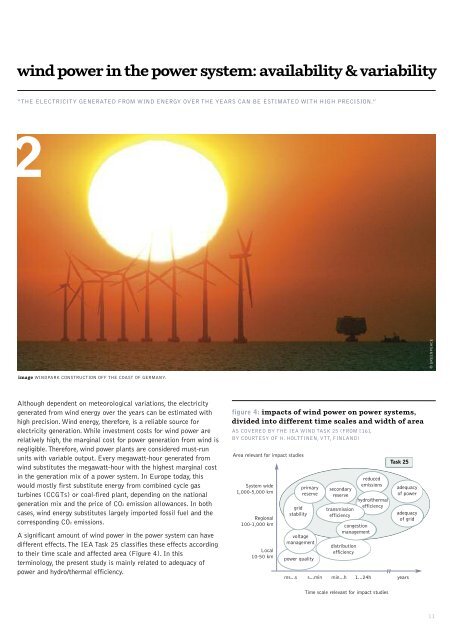offshore grids for wind power integration - Greenpeace
offshore grids for wind power integration - Greenpeace
offshore grids for wind power integration - Greenpeace
You also want an ePaper? Increase the reach of your titles
YUMPU automatically turns print PDFs into web optimized ePapers that Google loves.
<strong>wind</strong> <strong>power</strong> in the <strong>power</strong> system: availability & variability<br />
“THE ELECTRICITY GENERATED FROM WIND ENERGY OVER THE YEARS CAN BE ESTIMATED WITH HIGH PRECISION.”<br />
2<br />
© GREENPEACE<br />
image WINDPARK CONSTRUCTION OFF THE COAST OF GERMANY.<br />
Although dependent on meteorological variations, the electricity<br />
generated from <strong>wind</strong> energy over the years can be estimated with<br />
high precision. Wind energy, there<strong>for</strong>e, is a reliable source <strong>for</strong><br />
electricity generation. While investment costs <strong>for</strong> <strong>wind</strong> <strong>power</strong> are<br />
relatively high, the marginal cost <strong>for</strong> <strong>power</strong> generation from <strong>wind</strong> is<br />
negligible.There<strong>for</strong>e, <strong>wind</strong> <strong>power</strong> plants are considered must-run<br />
units with variable output. Every megawatt-hour generated from<br />
<strong>wind</strong> substitutes the megawatt-hour with the highest marginal cost<br />
in the generation mix of a <strong>power</strong> system. In Europe today, this<br />
would mostly first substitute energy from combined cycle gas<br />
turbines (CCGTs) or coal-fired plant, depending on the national<br />
generation mix and the price of CO2 emission allowances. In both<br />
cases, <strong>wind</strong> energy substitutes largely imported fossil fuel and the<br />
corresponding CO2 emissions.<br />
A significant amount of <strong>wind</strong> <strong>power</strong> in the <strong>power</strong> system can have<br />
different effects.The IEA Task 25 classifies these effects according<br />
to their time scale and affected area (Figure 4). In this<br />
terminology, the present study is mainly related to adequacy of<br />
<strong>power</strong> and hydro/thermal efficiency.<br />
figure 4: impacts of <strong>wind</strong> <strong>power</strong> on <strong>power</strong> systems,<br />
divided into different time scales and width of area<br />
AS COVERED BY THE IEA WIND TASK 25 (FROM [16],<br />
BY COURTESY OF H. HOLTTINEN, VTT, FINLAND)<br />
Area relevant <strong>for</strong> impact studies<br />
System wide<br />
1,000-5,000 km<br />
Regional<br />
100-1,000 km<br />
Local<br />
10-50 km<br />
grid<br />
stability<br />
voltage<br />
management<br />
<strong>power</strong> quality<br />
ms...s<br />
primary<br />
reserve<br />
s...min<br />
secondary<br />
reserve<br />
transmission<br />
efficiency<br />
min...h<br />
congestion<br />
management<br />
distribution<br />
efficiency<br />
reduced<br />
emissions<br />
hydro/thermal<br />
efficiency<br />
1...24h<br />
Task 25<br />
adequacy<br />
of <strong>power</strong><br />
adequacy<br />
of grid<br />
years<br />
Time scale relevant <strong>for</strong> impact studies<br />
11

















